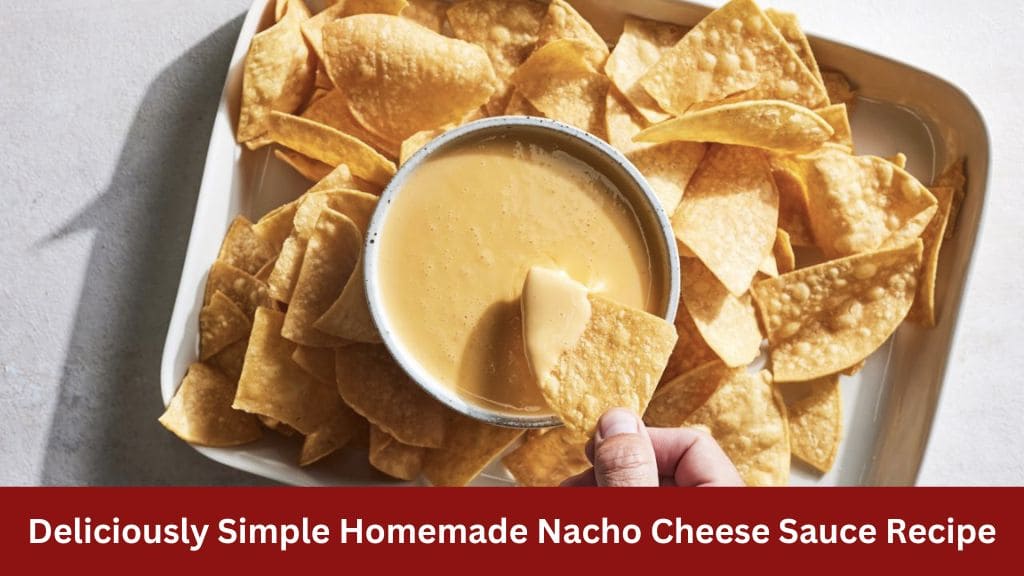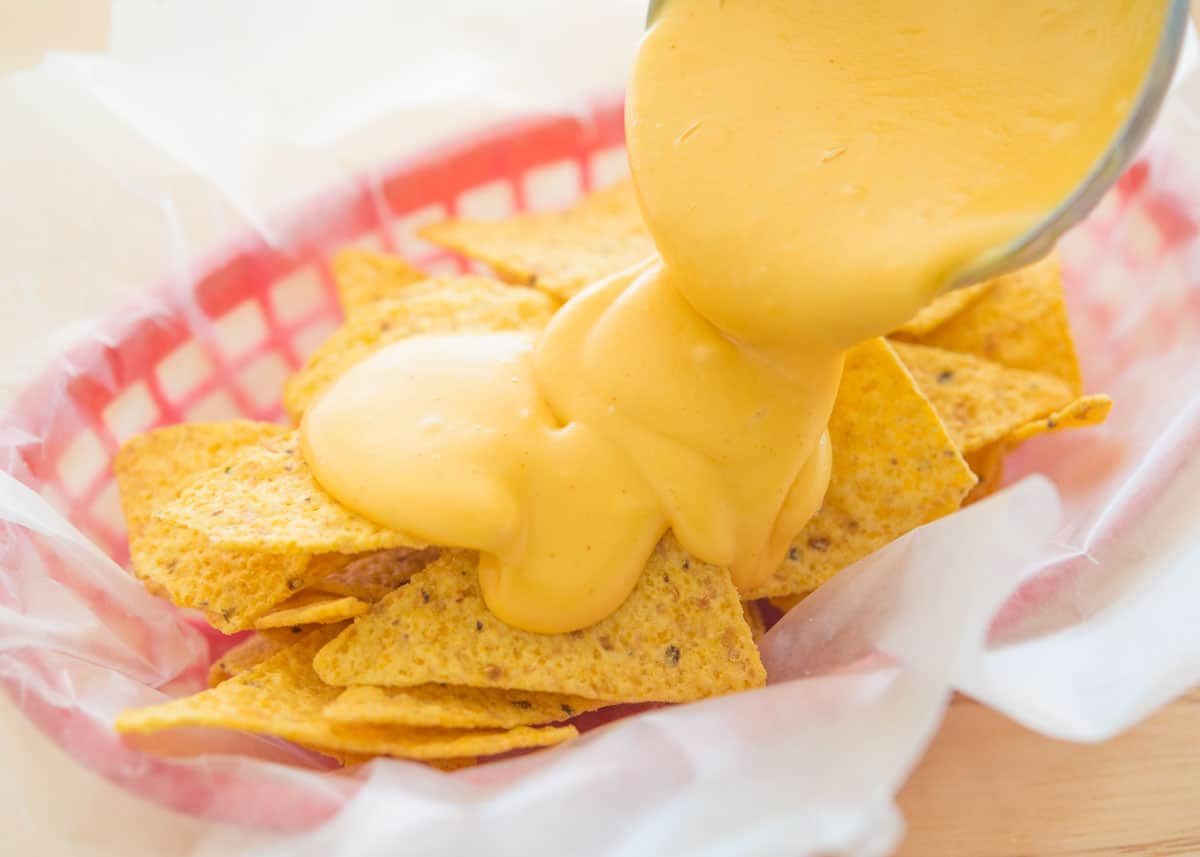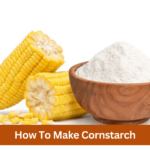If you’re craving a creamy, flavorful, and versatile cheese dip, look no further than this Homemade Nacho Cheese Sauce. Perfect for game days, parties, or just a comforting snack, this recipe uses simple, real ingredients to create a delicious sauce that can be customized to suit your taste.
Nacho cheese sauce is a staple at many gatherings, but store-bought versions often contain processed cheese and artificial ingredients. By making your own, you can control the quality and flavor, ensuring a healthier and tastier result. Plus, this homemade version is incredibly quick and easy to make!
Ingredients
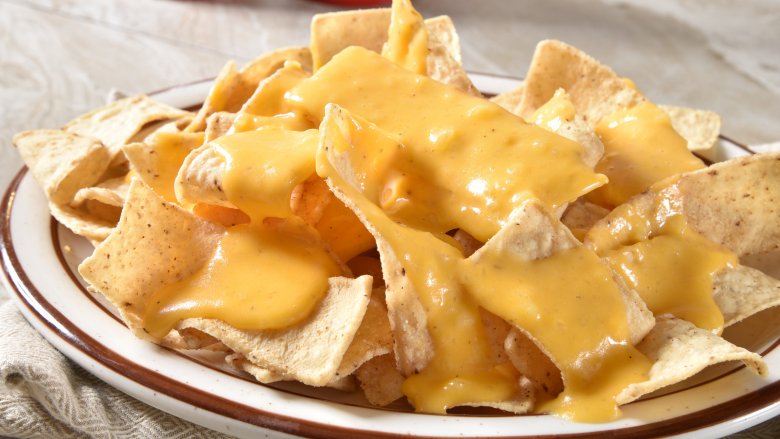
To make the basic nacho cheese sauce, you will need the following ingredients:
- 2 Tbsp butter ($0.22)
- 2 Tbsp flour ($0.02)
- 1 cup whole milk ($0.30)
- 6 oz. medium cheddar, shredded (about 1.5 cups) ($2.25)
- 1/4 tsp salt ($0.02)
- 1/4 tsp chili powder ($0.02)
Ingredient Notes
- Butter and Flour: These form the roux, a mixture that thickens the sauce.
- Whole Milk: Provides a creamy base.
- Medium Cheddar: Chosen for its balance between flavor and melting properties.
- Seasonings: Salt enhances flavor, while chili powder adds a subtle heat.
Equipment
- Small Saucepot
- Whisk
- Cheese Grater (if using block cheese)
Step-by-Step Instructions

Step 1: Make the Roux
- Add the Butter and Flour: Begin by placing 2 tablespoons of butter and 2 tablespoons of flour into a small saucepot.Why this step matters: The butter melts and combines with the flour to create a paste. This paste is what will thicken your cheese sauce without lumps.
- Cook the Roux: Heat the mixture over medium flame, whisking continuously. You will notice it becoming bubbly and foamy. Continue to whisk and cook for about 60 seconds.Tips:
- Whisk Constantly: This ensures even cooking and prevents burning.
- Cook Time: Cooking for 60 seconds helps eliminate the raw flour taste, resulting in a smoother, more flavorful sauce.
- Color: Aim for a “blonde” roux, meaning it should stay light in color. If it starts to brown, reduce the heat immediately.
Step 2: Add the Milk
- Whisk in the Milk: Gradually pour in 1 cup of whole milk while whisking continuously.Why this step matters: Adding the milk slowly and whisking continuously helps to incorporate it smoothly, preventing lumps from forming.
- Thicken the Sauce: Turn the heat up slightly and bring the mixture to a simmer. Continue to whisk frequently. You will notice the mixture thickening as it heats.Tips:
- Simmer, Don’t Boil: Simmering allows the sauce to thicken gently. Boiling can cause it to thicken too quickly or unevenly.
- Consistency Check: The mixture is ready when it coats the back of a spoon. This indicates that it has thickened enough to hold the cheese without becoming too runny.
Step 3: Melt the Cheese
- Add the Cheese: Remove the pot from the heat before adding the cheese. Stir in the shredded cheddar cheese, one handful at a time. Make sure each handful is fully melted before adding the next.Why this step matters: Removing the pot from the heat prevents the cheese from overheating, which can cause the sauce to become grainy or seize up.
- Low Heat if Needed: If the cheese isn’t melting completely, you can return the pot to a very low flame. Stir constantly until the cheese is fully incorporated.Tips:
- Hand-Shredded Cheese: Use block cheese and shred it yourself. Pre-shredded cheese often contains anti-caking agents that can affect the texture of your sauce.
- Slow and Steady: Adding the cheese slowly helps it melt evenly into the sauce, ensuring a smooth consistency.
Step 4: Season and Adjust Consistency
- Season the Sauce: Stir in 1/4 teaspoon of salt and 1/4 teaspoon of chili powder. Taste the sauce and adjust the seasonings as needed.Why this step matters: Seasoning brings out the natural flavors of the cheese and adds a subtle kick from the chili powder.
- Check the Thickness: If your sauce is too thick, add a splash of milk and whisk until you reach the desired consistency.Tips:
- Taste as You Go: Adjusting seasonings to your preference ensures the sauce meets your taste expectations.
- Adjust Consistency: A properly thickened sauce should be creamy and coat a chip without being too runny or overly thick.
Detailed Tips for Success

Cooking the Roux
What is a Roux?
A roux is a combination of fat (usually butter) and flour cooked together to serve as a thickening agent for sauces. It’s a fundamental technique in both French and American cooking.
Avoid Browning
- Why Avoid Browning?: Browning the roux too much can impart a toasted, nutty flavor which, while desirable in some dishes, is not ideal for a smooth cheese sauce. It can also change the color of your sauce.
- How to Avoid Browning: Cook the roux over medium heat and keep a close eye on it. The mixture should remain light in color, indicating it’s cooked just enough to eliminate the raw flour taste but not so much that it browns.
Whisk Continuously
- Why Whisk Continuously?: Constant whisking prevents the flour from sticking to the bottom of the pot and burning. It also ensures that the butter and flour are evenly combined, creating a uniform base for your sauce.
- Technique: Use a sturdy whisk and make continuous, circular motions. Make sure to reach the edges and bottom of the pot to prevent any parts from burning.
Adding the Milk
Slow Addition
- Why Add Milk Slowly?: Pouring in the milk gradually while whisking helps prevent lumps from forming. It ensures that the milk is smoothly incorporated into the roux, creating a cohesive mixture.
- Technique: Pour a small amount of milk into the roux and whisk vigorously until it’s fully combined. Repeat this process, adding the milk in increments, until all of it is incorporated.
Whisking Continuously
- Why Whisk Continuously?: Continuous whisking while adding the milk ensures a smooth texture and prevents lumps. It also helps to evenly distribute the heat, which aids in thickening the sauce.
- Technique: Keep the whisk moving constantly, and be patient. The mixture will start off thin but will thicken as it heats and simmers.
Bringing the Mixture to a Simmer
- Why Simmer Instead of Boil?: Simmering allows the sauce to thicken gently and evenly. Boiling can cause the sauce to thicken too quickly and may lead to scorching or an uneven texture.
- Technique: Once the milk is fully incorporated, increase the heat slightly until the mixture begins to bubble gently around the edges. Reduce the heat to maintain a simmer and continue whisking.
Melting the Cheese
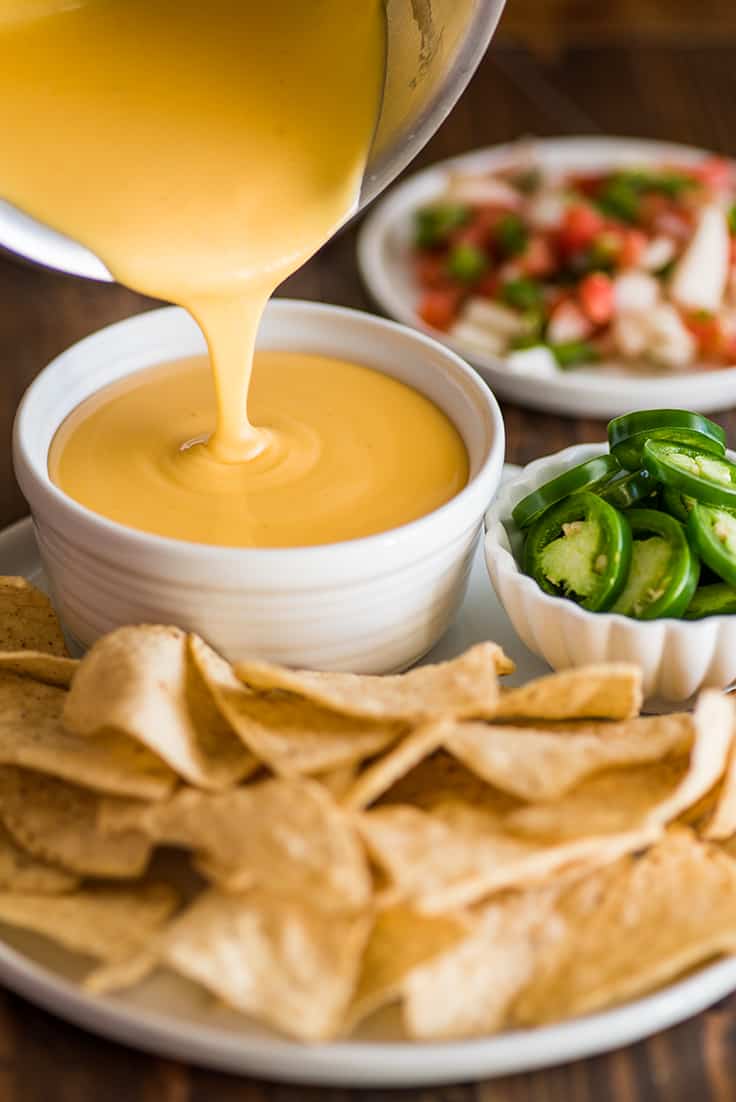
Remove from Heat
- Why Remove from Heat?: Cheese can become grainy or separate if it’s overheated. By removing the pot from the direct heat, you allow the cheese to melt slowly and evenly.
- Technique: Once the milk mixture has thickened, take the pot off the burner. Gradually add the shredded cheese in small handfuls, stirring continuously until each handful is fully melted before adding the next.
Hand-Shredded Cheese
- Why Hand-Shredded Cheese?: Pre-shredded cheese often contains anti-caking agents (like cellulose) that prevent the cheese from clumping together in the bag. These additives can affect the texture and flavor of your sauce, making it grainy or powdery.
- Technique: Use a box grater or food processor to shred cheese from a block. This ensures it melts smoothly and evenly into the sauce.
Seasoning and Adjusting
Taste and Adjust
- Why Taste and Adjust?: The final flavor of your nacho cheese sauce should suit your personal taste preferences. Tasting allows you to fine-tune the balance of salt and spices.
- Technique: After adding the cheese and initial seasonings (salt and chili powder), taste the sauce. Add more salt or spices as needed, a little at a time, until the flavor is to your liking.
Adjust Consistency
- Why Adjust Consistency?: Cheese sauce can thicken as it cools. Adjusting the consistency ensures that it remains smooth and dip-able.
- Technique: If the sauce becomes too thick, add a splash of milk and whisk until you reach the desired consistency. This step can be repeated if necessary, even when reheating leftovers.
Additional Tips for Success
Use Medium Cheddar
- Why Medium Cheddar?: Medium cheddar strikes a balance between flavor and meltability. Sharp cheddar, while more flavorful, has a higher fat content which can cause it to separate or become grainy when melted.
- Technique: Stick to medium cheddar for a smooth sauce. If you prefer the flavor of sharp cheddar, consider using a blend of medium and sharp cheeses.
Avoid Overheating the Cheese
- Why Avoid Overheating?: Overheating can cause the proteins and fats in the cheese to separate, resulting in a greasy or grainy sauce.
- Technique: Melt the cheese off the heat or over very low heat. Stir continuously and be patient, allowing the residual heat of the sauce to do most of the melting.
Hand-Shredding vs. Pre-Shredded Cheese
- Why Hand-Shredded Cheese?: Pre-shredded cheeses are convenient but often contain anti-caking agents that can affect the texture of your sauce.
- Technique: Always shred cheese from a block to ensure the smoothest, creamiest sauce. It’s a little more work but worth the effort for superior results.
Customization Ideas
:max_bytes(150000):strip_icc()/gooey-vegan-nacho-cheese-sauce-recipe-food-lab-hero-02-bb3ddae4b893415394a68de21cf33aad.jpg)
Spice It Up
Adding different types of cheese and spices can transform your basic nacho cheese sauce into a more complex and flavorful dish.
Pepper Jack Cheese
- Why Use Pepper Jack?: Pepper Jack cheese adds a spicy kick and a creamy texture to your sauce. It’s infused with peppers and sometimes herbs, which can enhance the overall flavor profile.
- How to Use It: Substitute half of the cheddar with pepper jack cheese. This will give you a balanced spice level without overpowering the sauce. For example, if your recipe calls for 6 oz. of cheddar, use 3 oz. of cheddar and 3 oz. of pepper jack.
Diced Green Chiles
- Why Use Green Chiles?: Green chiles provide a mild to moderate heat and a slight tanginess that complements the creamy cheese sauce. They also add a bit of texture.
- How to Use Them: Stir in a 4 oz. can of diced green chiles after the cheese has melted into the sauce. Make sure to drain the chiles first to avoid adding too much liquid to the sauce.
Garlic Powder
- Why Use Garlic Powder?: Garlic powder adds a savory depth of flavor that pairs well with cheese.
- How to Use It: Add a pinch (about 1/4 teaspoon) of garlic powder to the sauce along with the salt and chili powder. Adjust the amount to your taste.
Cumin
- Why Use Cumin?: Cumin provides a warm, earthy flavor that can give your nacho cheese sauce a slight smoky undertone, enhancing the overall taste.
- How to Use It: Add a small pinch of cumin (about 1/8 to 1/4 teaspoon) to the sauce with the other seasonings. Start with a small amount and increase if desired.
Cayenne Pepper
- Why Use Cayenne Pepper?: Cayenne pepper is a great way to add heat without changing the flavor profile too much.
- How to Use It: Start with a small pinch (about 1/8 teaspoon) of cayenne pepper. Taste the sauce and adjust the heat level to your preference. Remember, a little goes a long way.
Add Extra Ingredients
Incorporating additional ingredients can add new dimensions to your nacho cheese sauce, including texture, flavor, and visual appeal.
Green Onions
- Why Use Green Onions?: Green onions add a fresh, mild onion flavor and a bit of crunch. They also provide a pop of color.
- How to Use Them: Thinly slice a few green onions and stir them into the sauce after the cheese has melted. You can also sprinkle them on top as a garnish.
Rotel Tomatoes
- Why Use Rotel Tomatoes?: Rotel tomatoes are canned tomatoes mixed with green chiles. They add both flavor and texture, making your sauce chunkier and more robust.
- How to Use Them: Drain a can of Rotel tomatoes and stir them into the sauce after the cheese has melted. This will add chunks of tomato and a slight spiciness from the chiles.
Flavor Variations

Smoked Paprika
- Why Use Smoked Paprika?: Smoked paprika adds a smoky, slightly sweet flavor that pairs well with cheese.
- How to Use It: Add 1/4 teaspoon of smoked paprika to the sauce with the other seasonings. This will give your sauce a subtle smoky depth.
Mustard Powder
- Why Use Mustard Powder?: Mustard powder enhances the cheese flavor and adds a slight tanginess.
- How to Use It: Add a small pinch (about 1/4 teaspoon) of mustard powder to the sauce along with the other seasonings. This will help to cut through the richness of the cheese.
Combining Customizations
Feel free to combine several of these ideas to create a truly unique nacho cheese sauce. Here are a few combinations to inspire you:
Spicy Nacho Cheese Sauce
Ingredients:
-
- Half cheddar, half pepper jack cheese
- Diced green chiles
- Garlic powder
- Cayenne pepper
Tex-Mex Nacho Cheese Sauce
Ingredients:
-
- Rotel tomatoes
- Cumin
- Smoked paprika
- Green onions (for garnish)
Tangy and Spicy Nacho Cheese Sauce
Ingredients:
-
- Cheddar cheese
- Mustard powder
- Smoked paprika
- Cayenne pepper
Tips for Customizing
- Start Small: When adding new ingredients or spices, start with small amounts and taste as you go. You can always add more, but it’s hard to fix if you add too much.
- Balance Flavors: Make sure to balance spicy, savory, and tangy flavors. If you add something spicy, consider adding something creamy or tangy to balance it out.
- Texture Matters: Adding ingredients like Rotel tomatoes or green onions can change the texture of the sauce. Make sure these additions complement the smoothness of the cheese sauce.
Tips for Success

Cooking the Roux
Consistency is Key
- Why it Matters: The roux serves as the base for your cheese sauce, providing thickness and stability. Achieving the right consistency ensures a smooth, creamy texture.
- Technique: Cook the butter and flour mixture for about 60 seconds, whisking continuously. This allows the flour to fully hydrate and cook out the raw taste, while the butter helps to evenly distribute the flour.
Control the Heat
- Why it Matters: Maintaining the right temperature prevents the roux from burning or becoming too dark in color. A burnt roux can impart a bitter flavor to your sauce.
- Technique: Use medium heat and keep a close eye on the mixture. If it starts to brown too quickly, lower the heat or remove it from the burner temporarily.
Melting the Cheese
Patience is Key
- Why it Matters: Melting the cheese slowly and evenly ensures a smooth, creamy texture without any graininess. Rushing this step can result in a lumpy or greasy sauce.
- Technique: Add the shredded cheese to the hot milk mixture off the heat, allowing the residual heat to melt it gradually. Stir constantly and patiently until the cheese is fully incorporated.
Use Freshly Shredded Cheese
- Why it Matters: Pre-shredded cheese often contains anti-caking agents that can affect the texture and meltability of your sauce. Using freshly shredded cheese ensures a smoother result.
- Technique: Use a box grater or food processor to shred cheese from a block just before adding it to the sauce. This will yield the best texture and flavor.
Adjusting Consistency
- Why it Matters: Achieving the perfect consistency ensures that your sauce coats chips or other items evenly without being too thick or too thin. Making gradual adjustments prevents over-thinning or thickening.
- Technique: Add small amounts of milk, a splash at a time, and whisk thoroughly after each addition until you reach the desired consistency. This allows you to control the thickness of the sauce precisely.
Seasoning to Taste
Taste as You Go
- Why it Matters: Seasoning your sauce to taste ensures that it has the perfect balance of flavors. Adding too much salt or spice at once can overpower the cheese flavor.
- Technique: Taste the sauce after adding each seasoning and adjust as needed. Start with small amounts and gradually increase until the flavor is just right.
Balance Flavors
- Why it Matters: Achieving a well-balanced flavor profile enhances the overall enjoyment of your nacho cheese sauce. Balancing salty, savory, and spicy flavors is key.
- Technique: Consider the overall flavor profile you want to achieve and adjust the seasonings accordingly. For example, if you add a spicy ingredient like cayenne pepper, balance it with a touch of sweetness or acidity.
Storage and Reheating
Proper Storage
- Why it Matters: Storing your nacho cheese sauce correctly ensures its freshness and quality. Improper storage can lead to spoilage or changes in texture.
- Technique: Transfer any leftover sauce to an airtight container and refrigerate promptly. Use within 3-4 days for the best quality.
Gentle Reheating
- Why it Matters: Reheating the sauce gently prevents it from becoming too thick or separating. It helps maintain the creamy texture and ensures even heating.
- Technique: Reheat the sauce slowly over low heat, stirring constantly to prevent scorching or sticking. If it thickens too much, add a splash of milk to thin it out.
Experiment and Have Fun
Be Creative
- Why it Matters: Cooking is an art, and making nacho cheese sauce is no exception. Don’t be afraid to experiment with different cheeses, spices, and mix-ins to create your own unique version.
- Technique: Start with the basic recipe as a foundation and then let your creativity run wild. Mix and match ingredients to find combinations that you love.
Learn from Mistakes
- Why it Matters: Mistakes are inevitable, but they can also be valuable learning experiences. Embrace them as opportunities to improve your cooking skills.
- Technique: If your sauce doesn’t turn out as expected, take note of what went wrong and how you can adjust next time. With practice and persistence, you’ll master the art of making nacho cheese sauce.
Serving Suggestions

Classic Nachos
Why it’s a Classic:
- Versatility: Classic nachos are endlessly customizable, making them perfect for parties, game nights, or casual gatherings.
- Crowd-Pleaser: Who can resist a platter of crispy tortilla chips smothered in warm, gooey cheese sauce and topped with an array of tasty toppings?
How to Make Them Extra Special:
- Loaded Nachos: Pile on your favorite toppings, such as seasoned ground beef or turkey, black beans, diced tomatoes, sliced jalapeños, diced onions, and sliced olives.
- Bake Them: After assembling your nachos, pop them in the oven for a few minutes to melt the cheese and crisp up the chips even more.
Gourmet Nacho Variations
Why Go Gourmet:
- Elevated Flavors: Gourmet nacho variations take the classic dish to new heights with high-quality ingredients and sophisticated flavor combinations.
- Perfect for Entertaining: Impress your guests with upscale nacho creations that showcase your culinary prowess.
Creative Ideas to Try:
- BBQ Chicken Nachos: Top tortilla chips with shredded rotisserie chicken tossed in barbecue sauce, caramelized onions, grilled corn, and a drizzle of ranch dressing.
- Carnitas Nachos: Use tender, slow-cooked carnitas as the star topping, along with pickled red onions, cotija cheese, diced avocado, and cilantro.
Alternative Dipping Options
Beyond Tortilla Chips:
- Expand Your Horizons: While tortilla chips are the classic choice for dipping, there are plenty of other delicious options to explore.
- Think Outside the Box: Get creative with your dippers and consider using pretzel rods, carrot and celery sticks, crispy potato wedges, or even breadsticks.
Dipping Ideas to Try:
- Vegetable Platter: Serve a colorful assortment of fresh vegetables, such as bell pepper strips, cucumber slices, cherry tomatoes, and snap peas, alongside your nacho cheese sauce for a healthier option.
- Soft Pretzels: Warm, soft pretzels pair perfectly with warm cheese sauce. Arrange a variety of pretzel shapes and sizes on a platter for a fun and indulgent snack.
Incorporating Nacho Cheese Sauce into Recipes
Beyond Dipping and Drizzling:
- Nacho Cheese as an Ingredient: Get creative with incorporating nacho cheese sauce into your favorite recipes for added flavor and creaminess.
- Endless Possibilities: From macaroni and cheese to stuffed peppers, there are countless ways to incorporate nacho cheese sauce into savory dishes.
Recipe Inspiration:
- Nacho Mac and Cheese: Combine cooked macaroni with nacho cheese sauce, cooked ground beef or turkey, diced tomatoes, and green chiles. Top with crushed tortilla chips for a crunchy finish.
- Cheesy Quesadillas: Spread nacho cheese sauce on flour tortillas, then add your favorite fillings, such as cooked chicken or steak, sautéed peppers and onions, and shredded cheese. Fold the tortillas in half and cook until golden brown and crispy.
Presentation Tips
Elevating the Experience:
- Visual Appeal: Presentation plays a key role in enhancing the dining experience. Take the time to arrange your nacho creations attractively for maximum visual impact.
- Garnish with Fresh Herbs: Sprinkle chopped cilantro, parsley, or green onions over your nachos for a pop of color and freshness.
Serving Suggestions:
- Individual Servings: Serve individual portions of nachos in small skillets, cast iron pans, or ceramic dishes for a charming and rustic presentation.
- Family-Style Platter: Arrange a large platter of nachos with all the toppings in the center of the table for a casual and communal dining experience.
Storing and Reheating
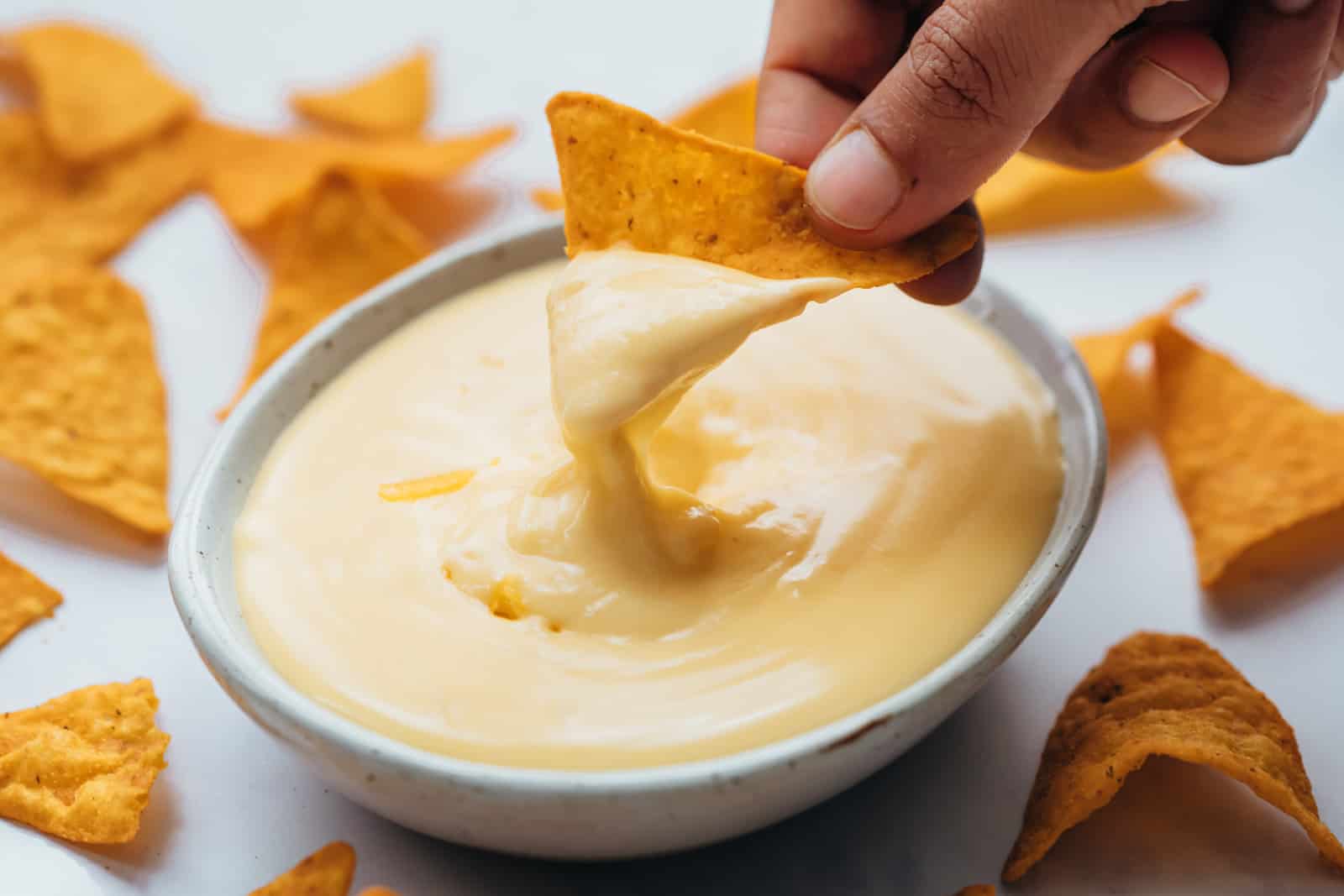
Storage
Refrigerate: Store leftover nacho cheese sauce in an airtight container in the refrigerator for up to 3 days.
Reheating
- Stovetop: Reheat the sauce gently on the stovetop over low heat, stirring frequently. If it’s too thick, add a splash of milk to reach the desired consistency.
- Microwave: Reheat in the microwave in short bursts, stirring between each burst until warm and smooth.
Nutrition Information
Here’s the nutritional breakdown for one serving of nacho cheese sauce:
- Calories: 183.1 kcal
- Carbohydrates: 4.92g
- Protein: 8.13g
- Fat: 14.65g
- Sodium: 337.23mg
- Fiber: 0.32g
Conclusion
Homemade nacho cheese sauce is a quick, easy, and delicious alternative to store-bought versions. With its rich, creamy texture and customizable flavors, it’s sure to be a hit at any gathering. Follow this guide to create your own perfect nacho cheese sauce, and enjoy the satisfaction of knowing you made it from scratch with real, simple ingredients.

